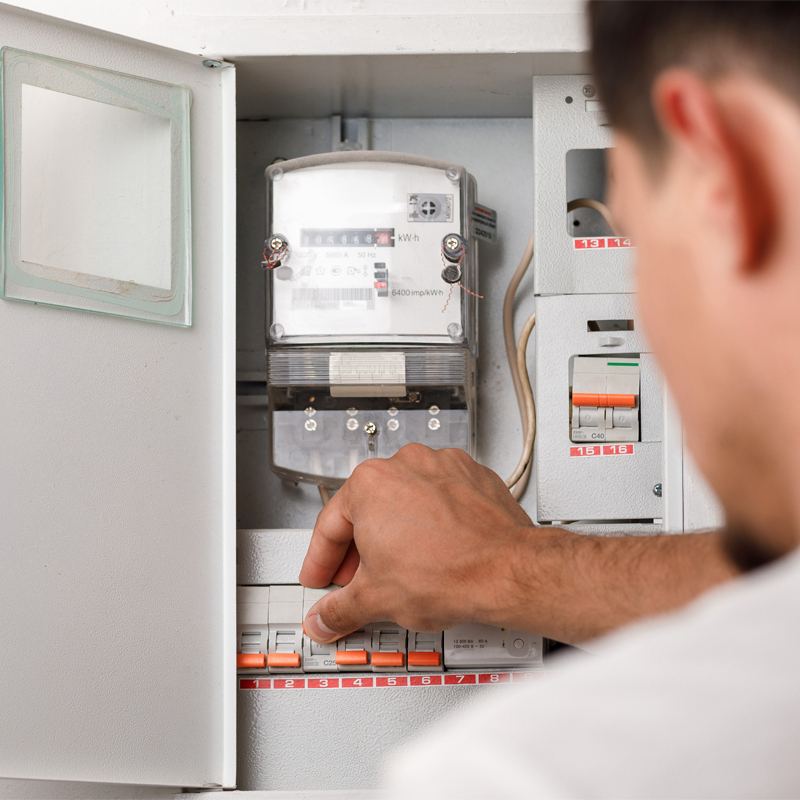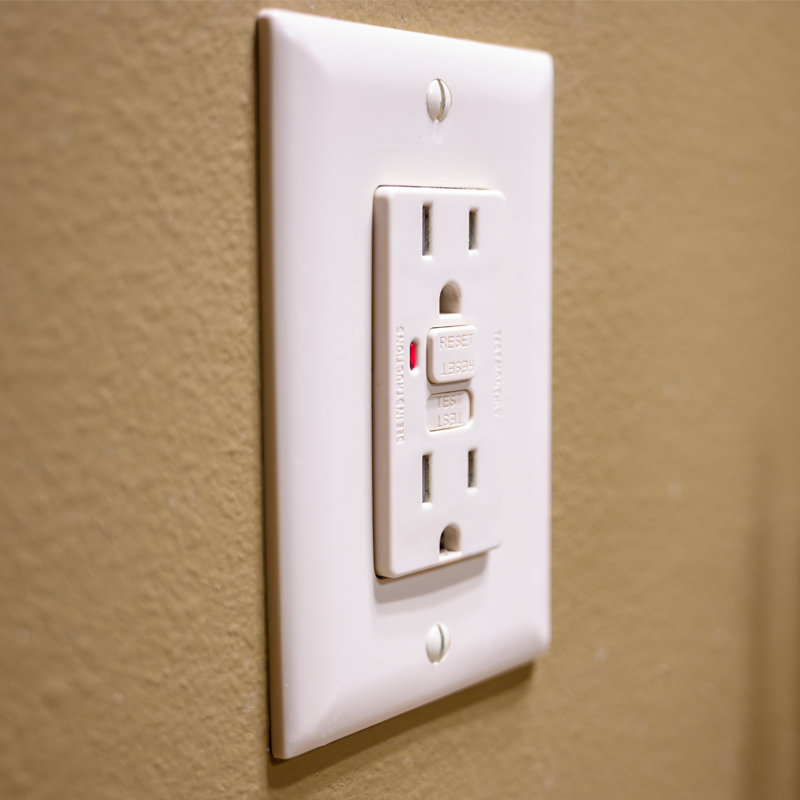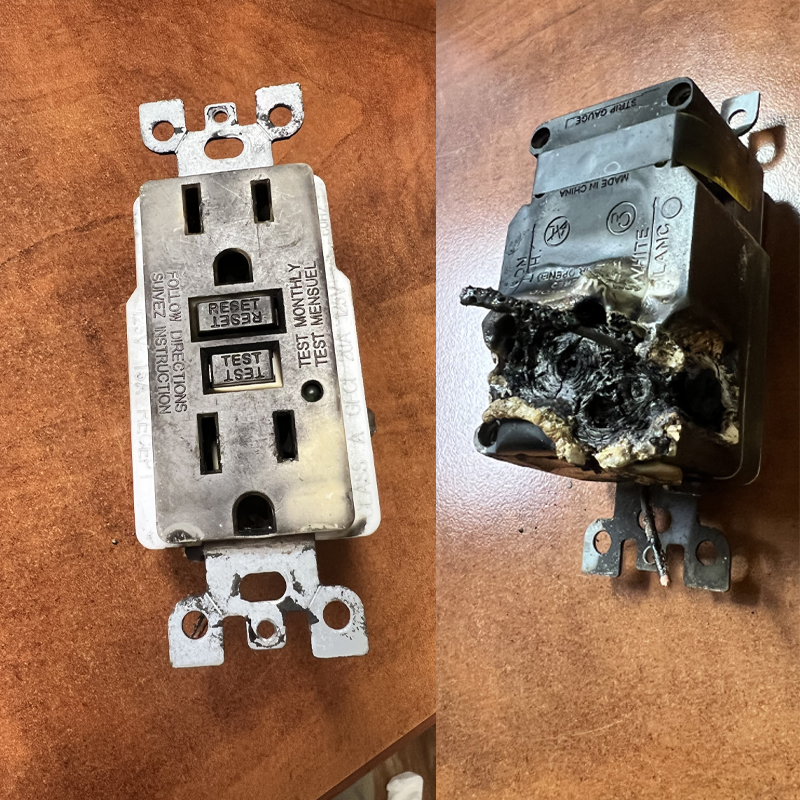Is it Dangerous if a Circuit Breaker Keeps Tripping?
When your circuit breaker trips you might find yourself suddenly in the dark as your electrical panel cuts the power to the room you’re standing in. In most cases, you’ll know why your circuit breaker tripped, as the culprit will be whatever plug or appliance you just connected to your electrical system!
But, what if you find yourself constantly resetting the same circuit breaker on your electrical panel? If this is the case, or if you don’t know why the circuit tripped, then something isn’t right. The cause could be as innocuous as an old electrical panel in need of replacement or as serious as a short circuit within your walls!
This article will explore the common causes of a circuit breaker tripping, explain what to do when your breaker trips, and warning signs that indicate you need to contact a professional electrician!
What is happening when a circuit breaker trips?
Your home’s electrical system is protected by breakers which automatically interrupt the flow of electricity when they detect a problem. There are different types of circuit breakers, each of which is designed to detect a different type of electrical fault. It is common for homes to use combination breakers which respond to one or more of the following fault conditions:
Overloaded Circuit
This is probably the most common reason for tripping a circuit breaker, and one that anyone who has connected one too many strings of Christmas lights has experienced. Every electrical circuit in your home has a maximum rated electrical current. Above this rating, the electrical wiring of the circuit begins overheating, leading to a risk of fire.
For typical wall outlets this rating is usually 15 amps – or about the power draw of a toaster or hair dryer. If you were to try to power two toaster ovens off of a standard outlet without a circuit breaker, the wiring in your walls or outlet would rapidly become dangerously hot.
Your circuit breaker works by detecting these overcurrent conditions and shuts off the power to the entire circuit.
If you accidentally trip your circuit breaker in this way there is nothing to be worried about. Simply unplug the excess devices from the outlet, reset your circuit breaker, and spread out your electrical load to another circuit. You may need to use an electrical outlet in a different room as a single breaker may protect all of the outlets in the same area.
Note: Do not try to forcibly keep a circuit breaker from tripping from circuit overload. This can lead to electrical fires!
Short Circuit
Your home’s electrical system is connected by three wires: the hot wire, neutral wire, and ground wire. When everything is working as it should, the hot wire and neutral wire never actually connect directly to one another – instead power always flows from the hot wire, into your electrical device, and out through the neutral wire.
A short circuit happens when power unexpectedly flows directly from hot to neutral. This can happen due to a loose connection, frayed wiring, or a bad switch. Regardless of how the wires come into contact with one another, the result is the same: heat and sparks!
When your electrical panel is working correctly, a short circuit will result in your circuit tripping. You may hear or see sparks, and often there are visible burns or discoloration on the wires where the short occurred. Sometimes you won’t be able to see the short, but you’ll smell ozone or a fishy-odor of burning plastic.
If you suspect you have a short circuit, leave the circuit in the off position and contact an electrician ASAP.
Ground Fault
Ground faults are the third common reason for a circuit breaker tripping – although they require a particular type of breaker called ground fault circuit interrupters (GFCI).
In North America GFCI’s weren’t required in houses until 1975, and even then they were only required in bathrooms. Today the National Electrical Code requires GFCI outlets in bathrooms, outdoor outlets, near hot tubs and spas, kitchen counter outlets, crawl spaces, unfinished basements, power receptacles near sinks, and laundry rooms.
When incorporated into outlets this type of protection is easy to spot as the outlet will have a ‘test’ and ‘reset’ button on the face. However, the protection can also be built into your fuse box, and will be evident by the presence of a
‘test’ button next to the individual circuit.
Unlike the previously discussed faults, GFCIs mostly prevent electrical shock instead of preventing fire. These breakers trip when they detect an imbalance between the current flowing into the hot wire and out of the neutral wire.
This happens when the electricity has found a path to ground, hence the name ground fault, and happens most commonly when an electrical device falls into water. If you look again at the list of places that require GFCI protection you’ll notice that they’re all wet environments – and this is precisely the reason why.
If your GFCI protected circuits are tripping with no obvious cause, you’ll want to get a licensed electrician to troubleshoot your problem.
Arc Fault
Arc Fault Circuit Interrupters or AFCIs are the newest type of electrical safety equipment that have been mandated in homes. Since 2002 the NEC has required that bedroom outlets be equipped with an AFCI.
Arc faults occur when electricity arcs, or jumps, through the air. This happens most often in cases of faulty wiring, and poses a significant fire risk.
Like GFCIs, AFCI breakers are easily spotted by their test button.
Homeowners should test both GFCI and AFCI outlets monthly. To test these outlets, plug in a device and turn it on. Next, press the test button on the outlet or breaker. The device should turn off as soon as you press the button. If it does not turn off then there is a problem which poses a risk of electrocution or fire and needs to be addressed by a licensed electrician.
How do you reset a tripped circuit breaker?
Resetting a tripped circuit breaker is very easy – so easy in fact that it barely counts as a DIY project.
- Find your electrical panel, it is often in your garage, laundry room, or possibly your basement
- Locate the circuit which has tripped. Generally the switches will all point to the center of your breaker box when they are on, so look for one which isn’t lined up with the rest.
- Switch the breaker fully to the off position
- Return the breaker to the on position
If multiple circuits have tripped, this may indicate a more serious electrical issue in your home’s wiring and should contact an electrician.
GFCI and AFCI breakers follow the same procedures as regular breakers.
For outlets with built in GFCI protection, resetting a tripped breaker is as simple as pressing the ‘reset’ button on the outlet’s face.
Signs you need an electrician’s help with your tripped circuit breaker
If your breaker trips because you tried to use a space heater and a hairdryer at the same time in your bathroom then fixing the problem is as simple as resetting your breaker and putting less strain on your electrical system.
However, if you aren’t sure why your breaker has tripped or are experiencing any of the following issues, then you need to contact a licensed electrician:
- Scorch marks on outlets or wiring
- Old, damaged, or frayed wiring
- Frequent tripping, particularly with no explanation or under light loads
- Breaker box is hot to the touch
- Breaker tripping is accompanied by burning smell, fishy smell, or ozone smell
Making Frequent Trips To The Breaker Because of a Tripping Circuit?
If you are regularly visiting your electrical panel to switch a popped breaker back on then something is probably wrong. The most common problem is simply that the breaker has become overly sensitive and needs replacement, but you should have an electrician come to rule out more serious issues.
Older breaker boxes will eventually need to be replaced, and this is not a recommended DIY project. When you are having major electrical work done, like replacing an electrical panel, be sure to work with a licensed electrician like Rytec Electric.



